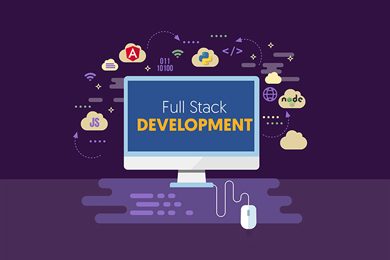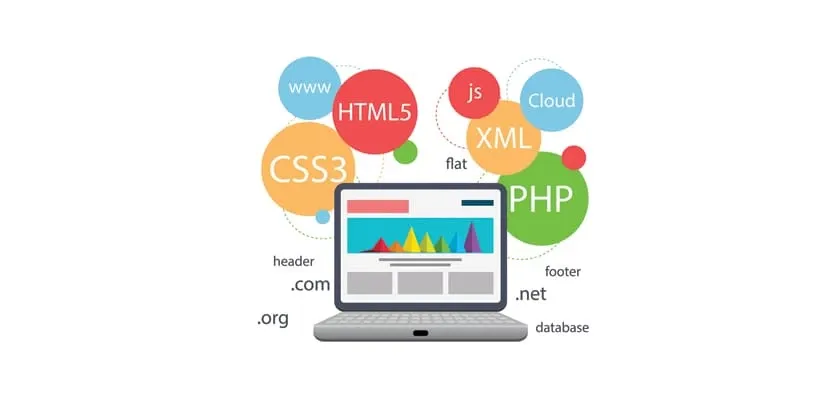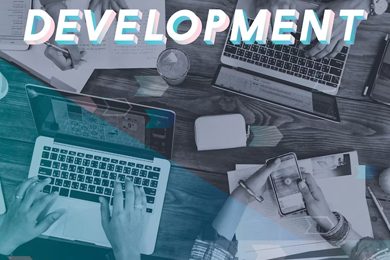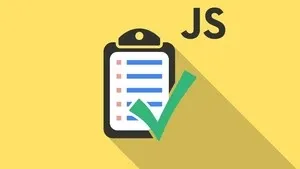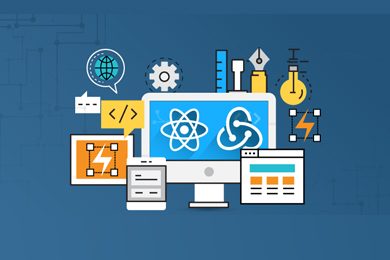This plan includes
- Limited free courses access
- Play & Pause Course Videos
- Video Recorded Lectures
- Learn on Mobile/PC/Tablet
- Quizzes and Real Projects
- Lifetime Course Certificate
- Email & Chat Support
What you'll learn?
- Learn to apply complete full-stack web development skills
- Master back-end development with Python, and Django framework
- Identify and solve real-world problems using ChatGPT Generative open ai techniques
- Complete a case study to manage a project from conception to completion state
- Be a comfortable front-end developer by making beautiful designing
- Using Artificial Intelligence techniques to create website and real-time source code
- Learn to write REST API services for your mobile apps
- Apply Database techniques as a Data Analyst or Data Science engineer
- Confidently apply PostgreSQL skills for your real world projects and apps
Course Overview
Are you ready to unlock the full potential of Full Stack Development and become a proficient software engineer capable of creating robust web applications from start to finish? If so, "Mastering Full Stack Development: From Frontend to Backend Excellence" is the ultimate online course that will equip you with the comprehensive skill set and knowledge needed to excel in the dynamic world of web development.
In this in-depth and hands-on online course, you will embark on an exciting journey through the entire web development stack, mastering both frontend and backend technologies. Whether you're a seasoned developer looking to expand your horizons or a complete beginner eager to enter the field, our carefully curated curriculum caters to learners of all levels.
Course Objectives:
1.ChatGPT Generative Open AI:** You will begin by start learning how to use and apply ChatGPT Generative Open AI techniques in fullstack development, like get the real-world prolem solutions and source code and apply to your project.
2.Frontend Fundamentals:** You will begin by mastering HTML, CSS, and JavaScript—the essential building blocks of modern frontend development. Learn to craft visually engaging and responsive user interfaces that provide seamless user experiences across devices.
3.Backend Technologies:** Transition into the world of server-side development, where you will explore language like Python. Grasp the principles of server-side logic, RESTful APIs, and data management. from this course you will learn Python programming language and how to apply chatGPT Generative open ai techniques to solve real-world problems.
4.Server-side Frameworks:** Mastering in python language frameworks of Django and REST API frameworks to learn to build web application development and REST API services for mobile apps or other service requests.
5.Database Management:** Learn how to work with databases effectively, in SQL databases. Understand how to design efficient database schemas and implement CRUD operations for PostgreSQL. and also you will learn MySQL RDBMS (relational database management system) concepts.
6.Authentication and Security:** Gain expertise in user authentication, data encryption, and best practices for securing web applications from potential vulnerabilities and threats.
7.Project Management:** Discover the process of developing web applications, managing development workflows, and writing source code tasks with tools.
8.REST API services:** Acquire vital skills in writing REST APIs, POSTMAN API tests and conducting efficient debugging to ensure the reliability and quality of your API code.
9.Performance Optimization:** Learn techniques for optimizing frontend and backend performance to create lightning-fast web applications that provide an excellent user experience.
10.Real-world Projects:** Throughout the course, you will work on practical projects, applying the concepts you learn to build comprehensive full stack applications. These hands-on experiences will reinforce your skills and boost your confidence as a full stack developer.
By the end of "Mastering Full Stack Development: From Frontend to Backend Excellence," you will have a thorough understanding of the entire web development process, enabling you to create impressive and scalable web applications from scratch. As you progress, you will have the support of our experienced instructors.
Join us now and take the first step towards becoming a sought-after full stack developer, equipped to meet the demands of the ever-evolving web development landscape. Enroll today and unleash your potential in the exciting world of full stack development!
Pre-requisites
- No programming experience needed. You will learn everything you need to know
- An Internet Connected Basic computer or Mac book to start learning
Target Audience
- Beginners - Those who are new to web development and want to learn both frontend and backend technologies.
- Frontend Developers looking to expand their skills and venture into backend development to enhance their career opportunities.
- Backend Developers seeking to gain expertise in frontend technologies to be able to build complete web applications and work on both ends of the development stack.
- Aspiring Full Stack Developers Individuals who aspire to work as full stack developers and want to gain a comprehensive understanding of the entire web development process.
- Web Designers - who want to complement their design skills with coding abilities and create fully functional web applications.
- Software Engineers interested in strengthening their skills and knowledge in full stack development to contribute effectively to end-to-end projects.
- Computer Science Students studying computer science or related fields who wish to get hands-on experience and practical knowledge in web development.
- Career Changers Professionals from other industries who want to transition into the field of web development and need a complete understanding of full stack technologies.
Curriculum 205 Lectures 20:47:26
Section 1 : Getting started
- Lecture 2 :
- Getting started on Windows, macOS, and Linux
- Lecture 3 :
- How to ask great questions
- Lecture 4 :
- FAQ’s
Section 2 : Introduction to Full Stack Development
- Lecture 1 :
- Understanding the role of a full-stack development
- Lecture 2 :
- Introduction to front-end, back-end, and database technologies
Section 3 : Introduction to ChatGPT Open AI
- Lecture 1 :
- What is ChatGPT
- Lecture 2 :
- Set up an account with ChatGPT
- Lecture 3 :
- How to use ChatGPT
- Lecture 4 :
- ChatGPT for your day-to-day tasks
Section 4 : Frontend Development – HTML-CSS
- Lecture 1 :
- HTML5 and CSS3 fundamentals
- Lecture 2 :
- Using ChatGPT to create HTML5 source code
- Lecture 3 :
- Using ChatGPT to create CSS3 source code
- Lecture 4 :
- Installing code editor – Sublime Text
- Lecture 5 :
- HTML – heading
- Lecture 6 :
- HTML – paragraph
- Lecture 7 :
- HTML - formatting text
- Lecture 8 :
- HTML – forms
- Lecture 9 :
- HTML – tables
- Lecture 10 :
- HTML – navbar / menu
- Lecture 11 :
- HTML – div tag
Section 5 : Frontend Development – Basic
- Lecture 1 :
- HTML5 – audio
- Lecture 2 :
- HTML5 – video
- Lecture 3 :
- HTML5 – drag and drop
- Lecture 4 :
- HTML5 – iframe
- Lecture 5 :
- HTML5 – YouTube video setting
- Lecture 6 :
- HTML5 – registration form
- Lecture 7 :
- HTML5 – login form
- Lecture 8 :
- Coding exercise
- Lecture 9 :
- Solution for a coding exercise
Section 6 : Frontend Development – Intermediate
- Lecture 1 :
- CSS – creating a webpage with CSS
- Lecture 2 :
- CSS – inline CSS
- Lecture 3 :
- CSS – internal CSS
- Lecture 4 :
- CSS – external
- Lecture 5 :
- CSS – classes
- Lecture 6 :
- CSS - id
- Lecture 7 :
- CSS – colors
- Lecture 8 :
- CSS – backgrounds
- Lecture 9 :
- CSS – padding
- Lecture 10 :
- CSS – borders
- Lecture 11 :
- CSS – box model
Section 7 : Frontend Development – Advanced
- Lecture 1 :
- CSS – forms
- Lecture 2 :
- CSS – website layout
- Lecture 3 :
- CSS – rounded corners
- Lecture 4 :
- CSS – pseudo classes
- Lecture 5 :
- CSS – gradients
- Lecture 6 :
- CSS – shadows
- Lecture 7 :
- CSS – button styles
- Lecture 8 :
- CSS – creating flexbox
- Lecture 9 :
- CSS – creating grids
- Lecture 10 :
- CSS – social media icons
- Lecture 11 :
- CSS – coding exercise
- Lecture 12 :
- CSS – solution for coding exercise
Section 8 : Frontend Scripting – JavaScript
- Lecture 1 :
- Introduction to the frontend JavaScript Scripting language
- Lecture 2 :
- Using ChatGPT to create JavaScript source code
- Lecture 3 :
- JavaScript First program
- Lecture 4 :
- Variables
- Lecture 5 :
- Data types
Section 9 : Frontend Scripting – JavaScript – Basic
- Lecture 1 :
- Internal JavaScript
- Lecture 2 :
- External JavaScript
- Lecture 3 :
- Inline JavaScript
- Lecture 4 :
- Async and defer
- Lecture 5 :
- String formatting
- Lecture 6 :
- String methods
- Lecture 7 :
- Use ChatGPT for DOM string manipulation
- Lecture 8 :
- Comparison operators
- Lecture 9 :
- Logical operators
Section 10 : Frontend Scripting – JavaScript – Intermediate
- Lecture 1 :
- If statements
- Lecture 2 :
- If-else statements
- Lecture 3 :
- Switch-case statements
- Lecture 4 :
- Use ChatGPT for DOM decision making
- Lecture 5 :
- While Loop
- Lecture 6 :
- For Loop
- Lecture 7 :
- Use ChatGPT to create list of items
- Lecture 8 :
- Coding Exercise
- Lecture 9 :
- Solution for Coding Exercise
Section 11 : Frontend Scripting – JavaScript - Advanced
- Lecture 1 :
- Create a Function
- Lecture 2 :
- Function call()
- Lecture 3 :
- ChatGPT to create a function with arguments
- Lecture 4 :
- Error Handling – Try-catch
- Lecture 5 :
- Error Handling – Try-catch-finally
- Lecture 6 :
- Login form validations
- Lecture 7 :
- Use ChatGPT to ES6 arrow functions
- Lecture 8 :
- Use ChatGPT to ES6 Classes
Section 12 : Backend Development – Python
- Lecture 1 :
- Introduction to server-side programming languages
- Lecture 2 :
- Using ChatGPT to create Python source code
- Lecture 3 :
- Python installation step by step
- Lecture 4 :
- PyCharm code editor installation
- Lecture 5 :
- Getting started, PyCharm code editor
- Lecture 6 :
- First “Hello World”
Section 13 : Backend Development – Python Basic
- Lecture 1 :
- Use ChatGPT to write variables
- Lecture 2 :
- Use ChatGPT to write data types
- Lecture 3 :
- Use ChatGPT to type casting
- Lecture 4 :
- Use ChatGPT to write strings
- Lecture 5 :
- Use ChatGPT to learn operators
Section 14 : Backend Development – Python Intermediate
- Lecture 1 :
- Use ChatGPT to write if-else statements
- Lecture 2 :
- Use ChatGPT to write while loop
- Lecture 3 :
- Use ChatGPT to write for loop
- Lecture 4 :
- Use ChatGPT to write a nested loop
- Lecture 5 :
- Exercise and Solution for Pyramid Pattern
Section 15 : Backend Development – Python Advanced-OOPs
- Lecture 1 :
- Use ChatGPT to write functions
- Lecture 2 :
- Use ChatGPT to Overview Object Oriented Programming
- Lecture 3 :
- Use ChatGPT to write class object programs
- Lecture 4 :
- Use ChatGPT to write the inheritance
- Lecture 5 :
- Use ChatGPT to write polymorphism
- Lecture 6 :
- Use ChatGPT to write abstract classes
- Lecture 7 :
- Use ChatGPT to write encapsulation
- Lecture 8 :
- Use ChatGPT to write validations
Section 16 : Databases and Data Management – MySQL
- Lecture 1 :
- Introduction to MySQL database system
- Lecture 2 :
- Using ChatGPT to get SQL Query solutions
- Lecture 3 :
- MySQL Installation
- Lecture 4 :
- Connect MySQL Server instance
- Lecture 5 :
- MySQL Workbench overview
- Lecture 6 :
- Get a Sample Database and Restore
- Lecture 7 :
- Overview of databases
- Lecture 8 :
- Create database
- Lecture 9 :
- SQL Data types
- Lecture 10 :
- Creating table
- Lecture 11 :
- EER – Enhanced Entity Relationship Diagrams
Section 17 : Databases and Data Management – MySQL-Basics
- Lecture 1 :
- DML - INSERT statement
- Lecture 2 :
- DML - UPDATE statement
- Lecture 3 :
- DML - DELETE statement
- Lecture 4 :
- DDL - CREATE table statement
- Lecture 5 :
- DDL – DROP statement
- Lecture 6 :
- DDL – ALTER statement
- Lecture 7 :
- DDL – TRUNCATE statement
- Lecture 8 :
- DCL – CREATE database user
- Lecture 9 :
- DCL – GRANT permissions
- Lecture 10 :
- DCL – REVOKE permissions
- Lecture 11 :
- SELECT statement
- Lecture 12 :
- DASHBOARD Analytics
Section 18 : Databases and Data Management – MySQL-Intermediate
- Lecture 1 :
- What are JOINS
- Lecture 2 :
- SQL – INNER JOIN
- Lecture 3 :
- SQL – LEFT JOIN
- Lecture 4 :
- SQL – RIGHT JOIN
- Lecture 5 :
- SQL – UNION statement
- Lecture 6 :
- CERTESIAN Product or CROSS Join
- Lecture 7 :
- CHECK constraint
- Lecture 8 :
- UNIQUE constraint
- Lecture 9 :
- Creating views
- Lecture 10 :
- Data Analytics view from multiple tables
Section 19 : Databases and Data Management – MySQL-Advanced
- Lecture 1 :
- Timestamp
- Lecture 2 :
- Advanced functions
- Lecture 3 :
- Sub Queries
- Lecture 4 :
- SELECT with calculations
- Lecture 5 :
- Create stored procedures
- Lecture 6 :
- Stored procedures with parameters
- Lecture 7 :
- Export data to .csv file
- Lecture 8 :
- Create Database backup
- Lecture 9 :
- Restore Database backup
Section 20 : Server-side Frameworks – Django - PostgreSQL
- Lecture 1 :
- Exploring backend frameworks
- Lecture 2 :
- Using ChatGPT to create source code
- Lecture 3 :
- Introduction to web framework and Django
- Lecture 4 :
- Installing Django and setting up a project
- Lecture 5 :
- Understanding Django architecture and structure
- Lecture 6 :
- Creating a Django app
Section 21 : Server-side Frameworks – Django – PostgreSQL-Basic
- Lecture 1 :
- Installing PostgreSQL server
- Lecture 2 :
- pgAdmin secure login and create a database
- Lecture 3 :
- Connecting Django to PostgreSQL
- Lecture 4 :
- Creating HTTP view method
- Lecture 5 :
- URL pattern on app
- Lecture 6 :
- Include apps to project urls
- Lecture 7 :
- Installing the psycopg2 module for database drivers
- Lecture 8 :
- Writing models and creating database tables
- Lecture 9 :
- Migrations to Database tables
Section 22 : Server-side Frameworks – Django – PostgreSQL-Intermediate
- Lecture 1 :
- Creating Superuser as Admin
- Lecture 2 :
- Authentication and Authorization
- Lecture 3 :
- User access permissions
- Lecture 4 :
- CRUD functionality
- Lecture 5 :
- Creating views methods for requests and responses
- Lecture 6 :
- Creating HTML template page
- Lecture 7 :
- Building Dynamic form handling
Section 23 : Server-side Frameworks – Django – PostgreSQL-Advanced
- Lecture 1 :
- Project – Creating model
- Lecture 2 :
- Project – Creating forms
- Lecture 3 :
- Project – Creating views
- Lecture 4 :
- Project – Applying ORM – migrations
- Lecture 5 :
- Project – my_form template
- Lecture 6 :
- Project – Adding urls
- Lecture 7 :
- Project – Creating success_view template
- Lecture 8 :
- Project – Urls update and adding apps to project
- Lecture 9 :
- Project – Run and submit data to database
Section 24 : Server-side REST API – Web Services
- Lecture 1 :
- Introduction to web framework and Django
- Lecture 2 :
- Installing Django and Djangoframework
- Lecture 3 :
- Django(CORS) installation
- Lecture 4 :
- Creating Django project
- Lecture 5 :
- Creating Django application
- Lecture 6 :
- Registering the app to project
- Lecture 7 :
- Postman API platform installation
Section 25 : Server-side REST API – Basic
- Lecture 1 :
- Building Django models for the REST API data structures
- Lecture 2 :
- Installing psycopg2 module for Database connection
- Lecture 3 :
- Database connection Django to PostgreSQL
- Lecture 4 :
- Applying Migrations for PostgreSQL
- Lecture 5 :
- Serializers in Django REST API
- Lecture 6 :
- Serializing data with Django REST Framework serializers
Section 26 : Server-side REST API – Intermediate
- Lecture 1 :
- Import required modules to write API methods
- Lecture 2 :
- Implement API GET method using REST framework
- Lecture 3 :
- Implement API POST method using REST framework
- Lecture 4 :
- Implement API PUT method using REST framework
- Lecture 5 :
- Implement API DELETE method using REST framework
Section 27 : Server-side REST API – Advanced
- Lecture 1 :
- Writing App URLs and path setting
- Lecture 2 :
- Write Project URLs and include app
- Lecture 3 :
- API GET method testing
- Lecture 4 :
- API POST method testing
- Lecture 5 :
- API PUT method testing
- Lecture 6 :
- API DELETE method testing
Our learners work at
Frequently Asked Questions
How do i access the course after purchase?
It's simple. When you sign up, you'll immediately have unlimited viewing of thousands of expert courses, paths to guide your learning, tools to measure your skills and hands-on resources like exercise files. There’s no limit on what you can learn and you can cancel at any time.Are these video based online self-learning courses?
Yes. All of the courses comes with online video based lectures created by certified instructors. Instructors have crafted these courses with a blend of high quality interactive videos, lectures, quizzes & real world projects to give you an indepth knowledge about the topic.Can i play & pause the course as per my convenience?
Yes absolutely & thats one of the advantage of self-paced courses. You can anytime pause or resume the course & come back & forth from one lecture to another lecture, play the videos mulitple times & so on.How do i contact the instructor for any doubts or questions?
Most of these courses have general questions & answers already covered within the course lectures. However, if you need any further help from the instructor, you can use the inbuilt Chat with Instructor option to send a message to an instructor & they will reply you within 24 hours. You can ask as many questions as you want.Do i need a pc to access the course or can i do it on mobile & tablet as well?
Brilliant question? Isn't it? You can access the courses on any device like PC, Mobile, Tablet & even on a smart tv. For mobile & a tablet you can download the Learnfly android or an iOS app. If mobile app is not available in your country, you can access the course directly by visting our website, its fully mobile friendly.Do i get any certificate for the courses?
Yes. Once you complete any course on our platform along with provided assessments by the instructor, you will be eligble to get certificate of course completion.
For how long can i access my course on the platform?
You require an active subscription to access courses on our platform. If your subscription is active, you can access any course on our platform with no restrictions.Is there any free trial?
Currently, we do not offer any free trial.Can i cancel anytime?
Yes, you can cancel your subscription at any time. Your subscription will auto-renew until you cancel, but why would you want to?
Instructor

519394 Course Views
68 Courses



 Tech & IT
Tech & IT
 Business
Business
 Coding & Developer
Coding & Developer
 Finance & Accounting
Finance & Accounting
 Academics
Academics
 Office Applications
Office Applications
 Art & Design
Art & Design
 Marketing
Marketing
 Health & Wellness
Health & Wellness
 Sounds & Music
Sounds & Music
 Lifestyle
Lifestyle
 Photography
Photography




